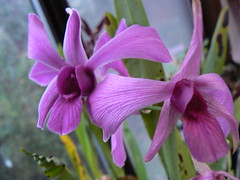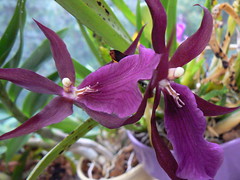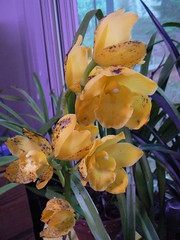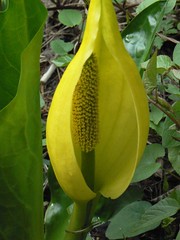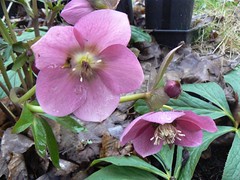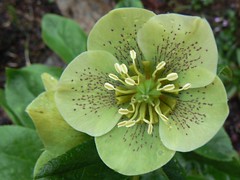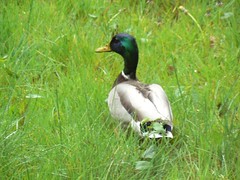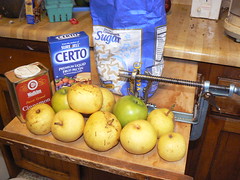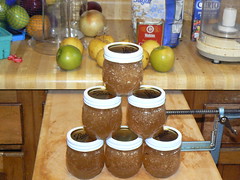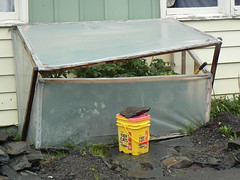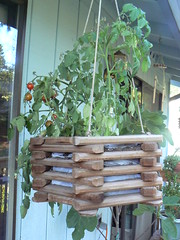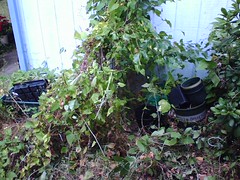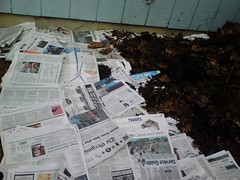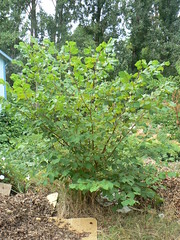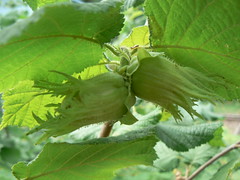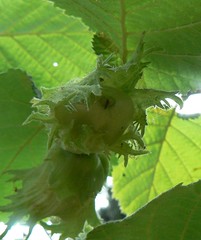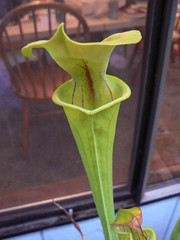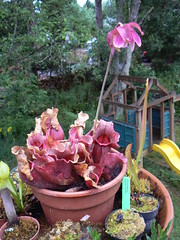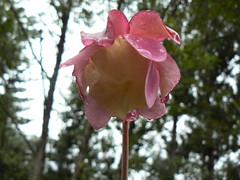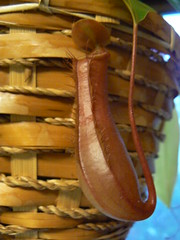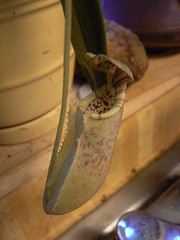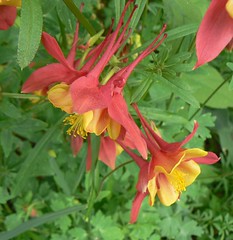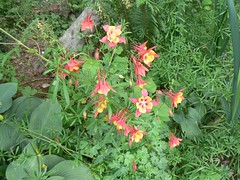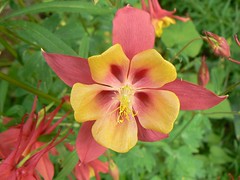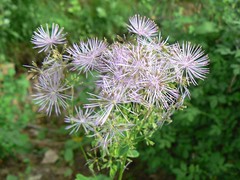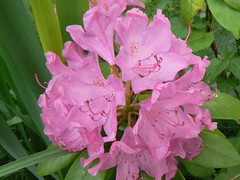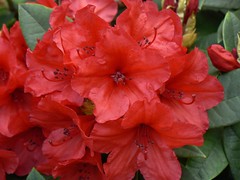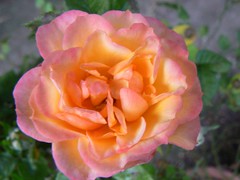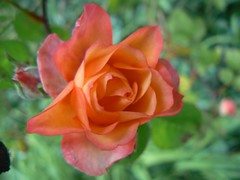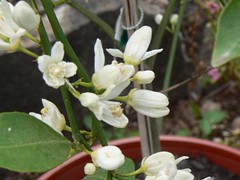Growing up with a mother who gardened taught me at an early age the pleasures of ripe tomatoes eaten right off the vine in the backyard on a sunny afternoon. There's just nothing like them -- not only the most perfect flavor and texture, but, warmed by the sun, the most perfect temperature too.
So, when I grew up and began living on my own, the first thing I wanted to plant was tomatoes. I lived in an apartment then, though, and while I tried for a few years to grow them in pots on my (pretty shady) balcony, I never really had any success. I'd get maybe three or four little cherry tomatoes total, and the plants would never get very big or healthy-looking.
When we got our house with its lovely yard three summers ago, I knew, KNEW this was finally going to be it. I would finally have tomatoes in the summer right out of my backyard! Too eager to wait until the following year, I put three plants in immediately. It was mid-June by then, though, and, well, they did about as well as the apartment ones had.
I blamed late planting.
The NEXT summer, I planted on time, used fresh soil in the garden beds, and watered verrrrry carefully, convinced this would finally be the Year of the Tomato. My plants started out looking great, but they just never really grew and eventually kind of fizzled out completely.
I blamed the trees that got too big and shadowed that end of the bed.
Finally, THIS year, I decided to quit monkeying around and ask for some professional help. I talked to a master gardener at the nursery, and she convinced me to give pots another try. Heeding her advice, I bought three enormous black plastic pots (black plastic being best for developing really hot soil, she said), and I planted one plant in each one -- two cherry varieties, and one Roma. New soil, great looking starter plants, hot dirt (woo woo!), and the ability to move the pots into the most sunshiny-est spot in the whole yard. What could possibly go wrong?
Answer: gah, EVERYTHING! Weeks later, while we had a few little measley cherries coming in, the plants were still small and not very healthy looking. The Roma had barely grown at all and the other two were yellowing (a sign of too much water) and also browning (a sign of too little -- I give up!).
In defense of my wanna-be-green thumb, all the Seattlites I've talked to in the last month or so about this have said they've never had any success growing tomatoes up here either, despite the fact all of us have friends in Oregon -- not that far from here! -- who boast about having so many fresh tomatoes in late summer they eat their fill and STILL have plenty left over to pelt at Republicans (Portland is a very liberal town, for your non-Northwesterners). So, while I've been feeling really disappointed lately and about ready to throw in the towel on this dream for good, I also haven't been feeling all that responsible.
I blamed geography.
But you guys, guess what! Three weeks ago, in a last ditch effort, I bought a small box of Miracle Gro specifically designed for tomatoes (they'd been fed a more general "vegetable" blend earlier in the summer). I mixed 1.5 tablespoons into my large watering can (raising an eyebrow when I saw the mixture turn to pink foam -- I'm putting weird pink foam on my edibles??) and followed the instructions, which said to sprinkle it on the foliage first and then soak the soil. I closed my eyes, sprinkled, soaked, and refilled the can twice more with pink foam for the other two pots. And, a week later, I did it all again.
Last week, it rained here almost every day -- nearly breaking the record for the most rain we've ever gotten in July. I barely went out to the garden the whole time, as I knew nothing needed any watering, that was for sure. But yesterday, taking a break from an entire day spent with the new Harry Potter book and my sofa (Hi, Janet! Me too!), I went out to deadhead my limp, rain-blasted petunias, and . . .
H-O-L-Y C-O-W
The first thing I noticed was that the Roma looked a little bigger and kind of lopsided. Getting closer, I realized it was more like a LOT bigger, and was lopsided because it was covered in heavy green tomatoes!
And the two cherries! Both have begun to pop out of their cages, and one I actually had to stake with a large rake because I didn't have anything more appropriate that was tall enough! They are COVERED in dozens of tomatoes -- COVERED!
Do you guys remember that show Perfect Strangers and Balki's "Dance of Joy"? Yep, that was me in my backyard yesterday afternoon. Victory! It is so sweet! Almost as sweet, as a matter of fact, as MY MILLIONS OF TOMATOES!
Was it the plant food? Was it the heat wave followed by the monsoon? Was it just their time to go nuts? The pots? The soil? I have no answers. But I suddenly feel like a ballplayer on a winning streak who becomes afraid to change his socks lest the streak be broken. This combination may be the magic secret to growing tomatoes in Seattle!
So, if you live up here too and have longed to feel the sun-warmed burst of a ripe cherry tomato on your tongue, get some huge black plastic pots (I want to say ours are 8 gallons, but I can check if anybody wants me to), put one plant in each pot, use Miracle Gro for tomatoes, place in direct sun, water too much AND too little at the same time (good luck with that one), sacrifice a live goat, cross your fingers, and do a rain dance in mid-July.
Let me know if it works for you too.
p.s. I was kidding about the goat.


